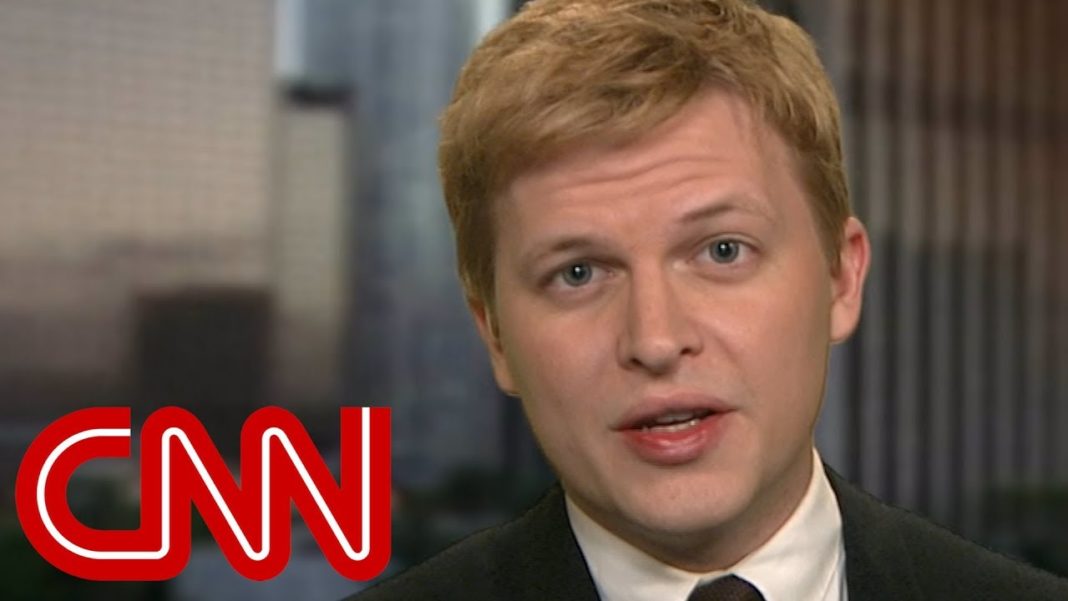What we know about the new allegation leveled last night against Brett Kavanaugh in a New Yorker report by Ronan Farrow and Jane Mayer doesn’t amount to much. In a familiar sounding scenario, we have a woman, Deborah Ramirez, accusing Kavanaugh of sexual assault, in a room full of people where nobody else who she says was in the room remembers the incident occurring, at a party that almost nobody can remember happening.
The one exception reported is an anonymous source that says he heard from someone, not Ramirez, at the time about the alleged event involving Kavanaugh while he and the accuser were students at Yale. Beyond that, there is some chatter about email rumors circulating among former Yale students this summer and fall. Everyone Ramirez named in the room that has spoken disputes that the incident occurred. On top of all of this, Farrow admits in his piece that Ramirez was uncertain about the allegation at first, but after six days of talking to her attorney, the three-decades-old memory returned to her.
So bereft of evidence is the story that The New York Times, along with other outlets, investigated the story and found it too wanting of evidence to publish. The New York Times reports:
The New Yorker did not confirm with other eyewitnesses that Judge Kavanaugh was at the party. The Times had interviewed several dozen people over the past week in an attempt to corroborate her story and could find no one with firsthand knowledge. Ms. Ramirez herself contacted former Yale classmates asking if they recalled the incident and told some of them that she could not be certain Mr. Kavanaugh was the one who exposed himself.
It is not clear if those emails from the accuser are part of the email chains reflected in the piece.
False Equivalence
This morning, Farrow came under questioning on CNN regarding the efficacy of his reporting and cited another story he reported on involving sexual assault allegations, which he says is similar to this one.
“This is a fairly high level of evidence for this kind of a case …This exceeds the evidentiary basis we’ve used in the past in several cases that were found to be very credible,” says @RonanFarrow of his reporting on the new allegations against Brett Kavanaugh. pic.twitter.com/Pl2hBOYaoL
— New Day (@NewDay) September 24, 2018
The case that Farrow cites to prove this claim is his story about former New York Attorney General, Eric Schneiderman. In that story, Farrow had four separate women making very similar allegations of sexual violence against Schneiderman. Some sought medical treatment, and Schneiderman did not deny the incidents took place, but rather said they were consensual. There were no witnesses in the Schneiderman incidents that refuted the claims made by the women.
To suggest that the Schneiderman case has less damning evidence attached to it than the Ramirez case is just patently false by any reasonable standard. In the former, all parties agree incidents occurred, while in the latter Kavanaugh and others deny it flatly and every single potential eyewitness named by the accuser who has spoken publicly has no recollection of it taking place. This claim that the two cases are analogous is awfully close to pure gaslighting.
Farrow’s Motivation
There is really no way to know whether Ramirez’s claim is politically motivated, nor is there any way to know if the New Yorker’s unethical decision to run the story was politically motivated. The best-case scenario is they just wanted to be first and win all the clicks. However, those claiming, as President Trump did this morning that there is a political motivation behind the unveiling of this allegation have good reason to wonder, given the timing and tenuous evidence presented.
Farrow tries to use the case of Schneiderman, a Democrat, to prove that he is after all abusers and not just Republicans. But why then did he use such a blatantly different standard in deciding to run the Kavanaugh story? Why were fewer facts and elements of corroboration needed to push this story through?
Damaging The Me Too Movement
Whether his nomination survives or not, Brett Kavanaugh’s reputation is not the only thing damaged by this reckless reporting. The Me Too movement will also suffer. Thus far the movement has clung to decent standards of evidence and a presumption of innocence in most cases. None of the major takedowns occurred with such flimsy stories behind them.
The New Yorker is now opening the door to other outlets and entities to a world in which presumption of guilt is the norm in these cases. There are those on the left who approve of this approach. They argue that sure, a few innocent men might go down, but it’s more important to believe all women for the greater good of society.
This is a dangerous and illiberal road that many if not most Americans will refuse to walk down. The power of the Me Too movement has been the overwhelming amount of evidence against so many well-liked famous men. What our eyes have been opened to is just how much evidence exists, how quickly the dominoes, including evidence, fall once an accuser comes forward.
In fact, one of the planks of Kavanaugh’s defense is that there is no long pattern of abusive behavior as we have seen in so many Me Too cases. There is no breaking of the dam leading to a flood of allegations. But Ronan Farrow found one. And even though every other outlet decided there wasn’t enough evidence, he knew that true or not, Ramirez coming forward would harm one of Kavanaugh’s central defenses.
If the presumption of innocence and journalistic integrity are abandoned, if instead, we operate off of the idea that even an allegation with little to no corroboration is enough to pronounce a man guilty in the reputable press, we will move into a terrifying moment where a most basic American principle will wither away.
Ronan Farrow has chosen to make his beat sexual abuse by powerful men. He has done some excellent reporting and taken down many men who clearly deserved it. He has done so by sticking to very high standards. Yesterday he failed that test. His hatchet job is a disgrace to his own work, a disgrace to the New Yorker, and a smear against Brett Kavanaugh. But perhaps worst of all it will and should make many Americans skeptical of his important work, and the work of others going forward.





